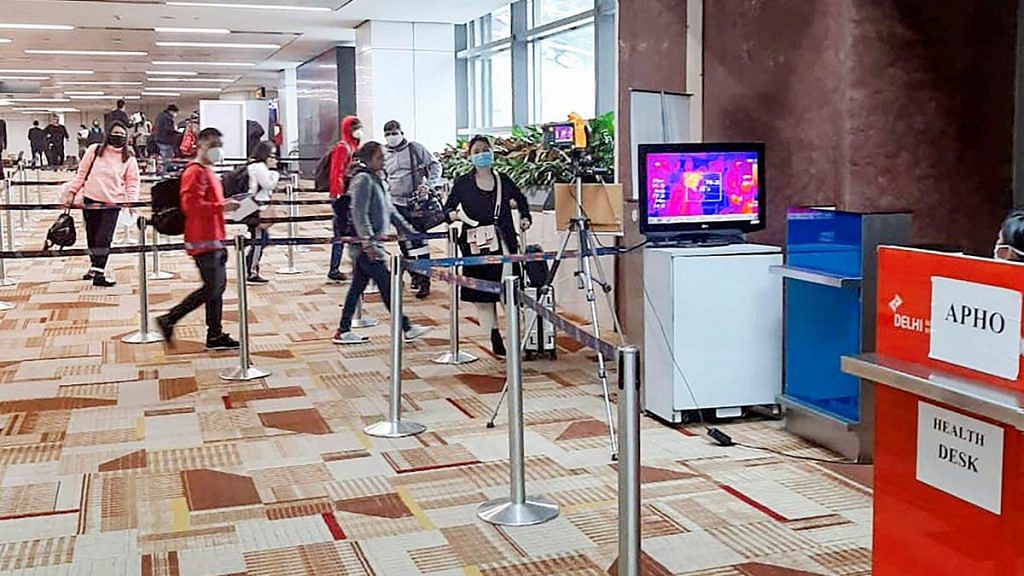India’s skies are empty. Where once massive jetliners flew, flocks of birds dart around. Meanwhile, on the ground, travelers worry about when and how they will fly again. Air travel in the pre-coronavirus times had become so affordable and convenient that hawaii chappal wale bhi hawaii jahaj par chal rahe the. Unfortunately, during the lockdown, all this has come to a sudden halt. India’s commercial fleet has about 670 aircraft, but apart from a few planes flying evacuation and cargo flights, this entire fleet remains parked.
Despite the gloomy present, the future looks bright for India’s aviation system. Here’s why. First, air travel is the safest mode of long-distance transportation in terms of accidents. It is also probably the safest mode of travel as far as the risks associated with coronavirus infections are concerned. Passengers are therefore likely to switch in large numbers away from rail and car to air travel.
Second, with the plunge in oil prices, air travel will become even more affordable.
And, finally, it is likely that air travel will move decisively away from hub-and-spoke international flying and switch largely to direct, point-to-point international flights. In the post-coronavirus world, India’s aviation system is going to boom.
Also read: Airlines and airports will need very expensive revamp to survive in the virus era
Oil’s well for airlines
Air travel has long been recognised as the safest mode of long-distance transportation compared to driving or taking a train. While most of this analysis has been done for the US and Europe, it holds true for India as well, given our excellent air safety record in the past few years. In the coronavirus world, passengers now also worry about the risk of infection spread. Air circulation in planes equals that of the best hospitals reducing the risk of viral infection. In addition, overall exposure is much lower because rail and car travel can take 10 times longer than a flight to a far-off destination.
India has amongst the lowest air fares in the world. On a per kilometre basis, air travel generally costs about Rs 5 for an economy seat. These low prices have resulted in flying becoming very affordable for India’s vast middle class. Students fly to their universities, parents go to visit their children, families go home to visit grandparents for Diwali, and business people jet off to visit their suppliers and customers. Air travel today has become part of our daily lives.
Oil prices have now plunged by almost 50 per cent going from about $60 per barrel to $30 per barrel. Jet fuel accounts for about 30-40 per cent of the total cost of flying. Therefore, as long as aviation turbine fuel taxes do not increase, this will bring down the price of flying substantially. Moreover, with the use of electric cars and two-wheelers growing quickly, aviation fuel prices are likely to remain low in the foreseeable future.
Also read: The unruly Indian flier is about to get a crash course in airport civility thanks to Covid
Direct international flights will directly benefit airlines
The coronavirus pandemic may bring down the curtain on vast international hubs. Entire economies have been built around city-like airports that bring in passengers from destinations around the world and then have them connect to their eventual destinations. Airports have become a 21st century fusion of luxurious shopping, delightful parks, funky entertainment, swanky hotels, and delectable dining, optimised to capture passenger spending. Unfortunately, these very same qualities make them highly susceptible to spreading highly infectious diseases. Air travellers will likely prefer to avoid such hub airports and travel quickly and conveniently to their destinations.
This is good news for India’s aviation system. Now, instead of connecting at some hub airport and then traveling on to Europe, Japan, the US, or Australia, travellers will fly directly to these countries. Taking advantage of these trends, our airlines will likely add long-haul widebody planes to their existing narrowbody fleets. Today, our Indian airlines fly only about 20-30 per cent of international travellers from India. We can hope that this number will grow quickly and the majority of Indian travellers will be flying internationally on Indian airlines.
Naturally, this will benefit our airports as well. Duty-free shopping will be done at Indian airports. Entertainment and dining will be consumed locally, driving revenue and job growth at our airports across India.
Also read: No in-flight magazines, health checks, longer queues — How flying could change post Covid
India’s opportunity
The passenger experience in the airport and on the plane is also likely to become much more convenient. Social distancing will be the norm and many operations will be automated. With the new DigiYatra system being rolled out, passengers will be able to check-in, get their luggage loaded, and board their flights without coming close to any security person or gate agents. Retail and dining establishments will ensure that there is no crowding in their stores. Security checking will initially move more slowly, but body scanners will eventually speed up the frisking process. On board, passengers will naturally be wearing their masks and gloves while flight crew will probably be suited up in PPE kits.
In 2019, Indian airlines flew over 200 million passenger trips, including about 144 million domestic trips. There were about 180 million upper class and 1.5 billion second class mail/express passenger trips on Indian railways in FY19 so there is ample room for air travel to boom in the next few years. India’s skies will soon be humming again with the whir of jet engines.
Jayant Sinha is the Chairman of the Standing Committee on Finance in Parliament and a Lok Sabha MP from Hazaribagh, Jharkhand. Views are personal.
